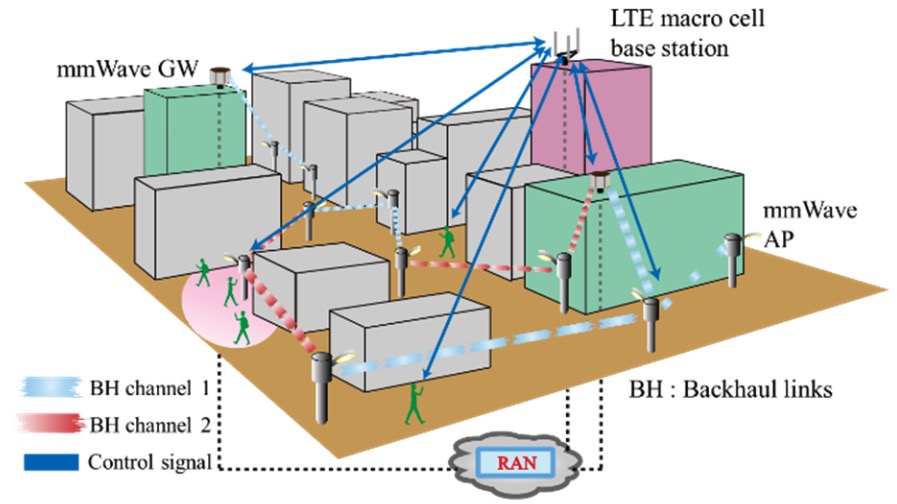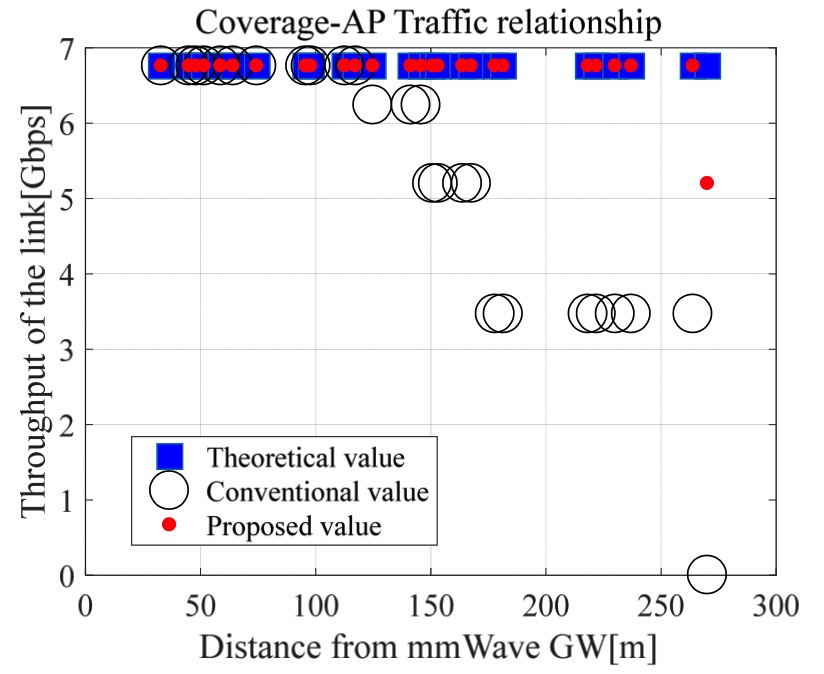Millimeter-wave Mesh Backhaul Networks
Introduction
5G communication network is expected to support enhanced mobile broadband services by millimeter- wave overlay heterogeneous network (HetNet). However, connecting backhaul using cable such as optical fibers is extremely costly. To circumvent, we have proposed mmWave mesh backhaul networks (MMBN). MMBN shown in Fig. 1 enable centralized software defined network (SDN) control using LTE macro cell base station in order to determine relay route, dynamic ON/OFF and etc.
One of the problems toward realizing MMBN is intra-channel interference from other links, so we need interference management to obtain high backhauling rate. As a contribution to solve this problem, we proposed interference management for MMBN.

Fig.1 MMBN Architecture

Fig.2 Algorithm of Interference Management
Proposed Algorithm
In order to adapt to intensive user traffic distribution, we design the networks to achieve maximum throughput until the furthest link. In order to achieve the requirement, we proposed a 3-step approach of deploying mmWave Access Point (AP) in zigzag, allocating orthogonal channels when necessary and finally optimal power transmission allocation for alleviating bottleneck of the mesh backhaul networks. However, the number of dynamic searches increases rapidly when we combine these methods. Therefore, we first employ static allocation exploiting characteristic of mmWave and then dynamic allocation using simple approaches. Our algorithm is shown in Fig. 2.
Simulation Analysis
Figure 3 shows that coverage using the proposed algorithm is improved as compared to conventional approach which deploys APs linearly and alternates channel per hop. We confirmed the proposed approach can reduce interference up to 250m from mmWave GW and the number of dynamic searches reduces significantly shown in Fig. 4.

Fig.3 Coverage Characteristics

Fig.4 Number of Dynamics Searches
